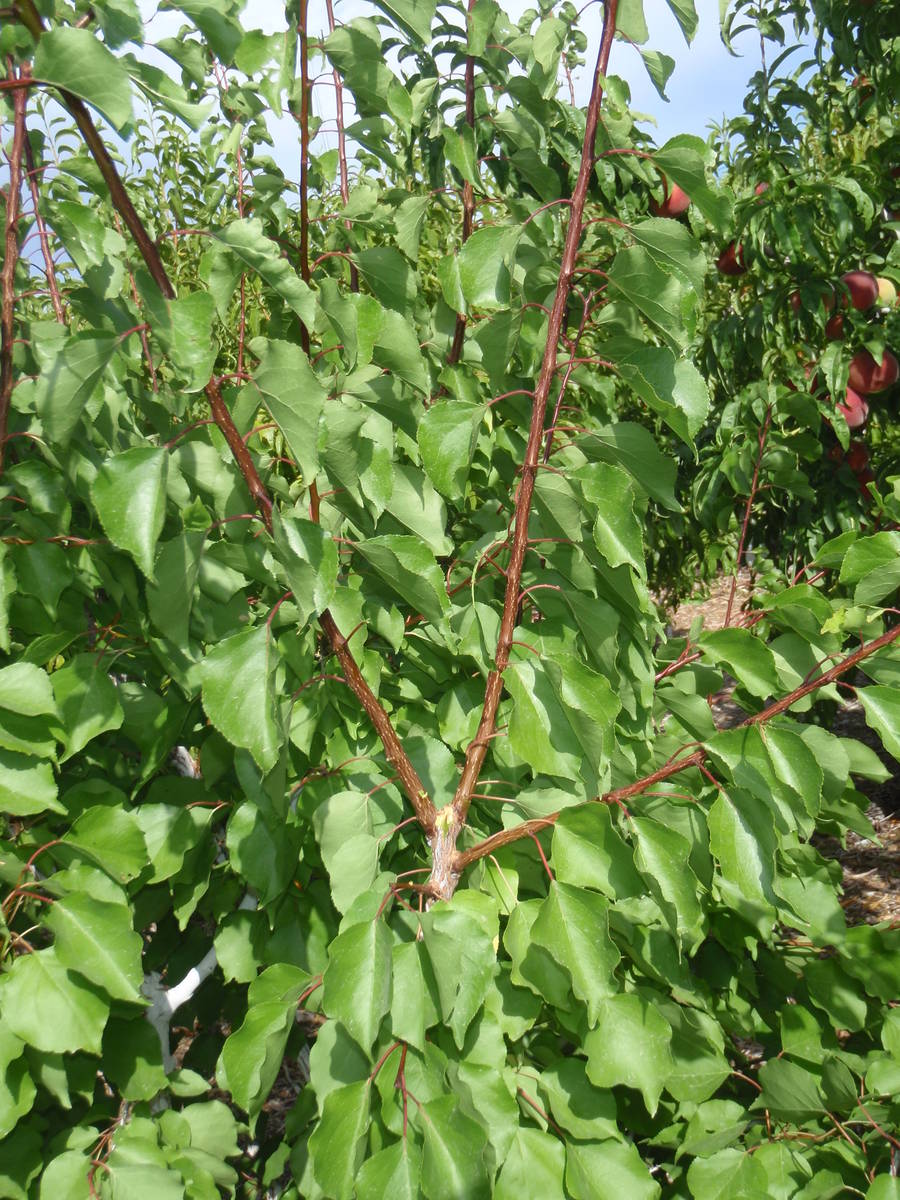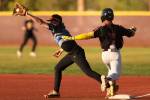High-nitrogen fertilizer can reduce fruit production
Q: Have you seen a reduced fruit set in plums, apricots and pluots this year or is it just mine? These are 3- to 5-year-old trees and I did not see many flowers at all. Not so much lack of pollination, but a lack of flowers. Each tree has anywhere from five to 20 fruit this year where last year I had easily a hundred.
A: Looking at flower production early helps decide what happened. If you said you saw lots of flowers and then had terrible fruit production, then my answer would be different. I suspect the trees were fertilized too heavily with a high-nitrogen fertilizer or compost.
If young trees are given a lot of nitrogen fertilizer (mostly bagged fertilizer with a very high first number such as 21-0-0 or too much rich compost) then new growth will be pushed at the expense of flowering. Fruit trees like to be a little on the hungry side regarding early access to nitrogen fertilizers combined with early production.
Look at the color of the green leaves (very dark green), production of new growth and your fertilizer/compost additions made early in the spring or late last year. The dark green color is kind of arbitrary, but the amount of new growth is not.
When young trees are given plenty of nitrogen, they produce lots of leaves and stem growth and very few flowers. An average of about 18 to 24 inches of stem growth is great but not 3 to 4 feet. The same thing can happen to older trees, but it takes a lot more fertilizer and compost. You will see it in tomatoes if they are overfertilized and the variety is indeterminate.
A less likely possibility is called “alternate bearing.” The fruit tree enters heavy production one year, exhausts all its reserves for the following year so it produces fruit lightly the second year and then enters heavy production again in the third year. It’s a cycle of heavy production, light production, heavy production.
The solution to that problem is to thin the tree of fruit during the heavy production years so it balances its fruit load more evenly from year to year. But alternate bearing might be a stretch in your case because you saw it happen on a lot of different kinds of fruit trees.
In your case, use half of the fertilizer, or rich compost, recommended so less growth is produced.
Q: My pluerry tree should have produced fruit for me this year but didn’t. Why? Was there a problem not having enough chilling this past winter?
A: Two situations are going on with your trees; one is growing a pluerry (interspecific cross done the old-fashioned way between a plum and a sweet cherry) that has little production history in Southern Nevada. And secondly, employing a poorly understood concept called “chilling hours” to explain what is going on. When a production history of a new fruit for our area includes at least five sequential years at a couple of different locations, I start getting comfortable with its potential.
I have had trouble producing sweet cherries, one of pluerry’ s parents, in parts of the valley. People in other locations have not had trouble with fruit production.
Yours does not seem to be a chilling problem since a lack of flowering is not the problem. It might be a humidity problem since low humidity is a recognized problem for some fruit trees producing fruit. The most success with sweet cherry production seems to be in landscapes with a lawn, swimming pool or during wet springs.
Like it or not, fruit production from a pluerry may be an erratic experience that only time and observation will settle.
Q: I have some weird new growth coming from my Wilson olive tree. Do you know what it is and how I can control it?
A: I looked at the pictures you sent of this weird new growth, and it does not look like any disease of olive I know about or could find internationally in a search through the internet. I suspect it is probably related to weed killer damage.
I see this problem frequently soon after hot and windy weather. To get that kind of damage, the weed killer had to be applied during rapid spring and early summer growth — approximately one to two months ago. Regardless, you are left with the same strategy: Wait and see what happens.
The most common diseases of European olive cause root rots, limb dieback, soil nematodes and some leaf problems but no leaf and stem distortion. Drift of weed killers happens when the surface sprayed is hot, the weed killer is volatized and blown about when there is wind. Damage is close to where it was sprayed and downwind. For this reason, weed killers should never be applied to hot surfaces particularly when the wind speed is above 2 mph.
If the weed chemical drifted, it is absorbed by plant leaves within 12 to 24 hours. One side of the tree might be more heavily damaged than the other side.
If a weed killer was applied to the lawn beneath the tree, then tree roots may absorb it, and the chemical damages the tree. Once the damage is seen, it is too late to do anything except wait.
Q: I purchased a desert gold peach tree and wanted to know if I should plant it now or wait until fall because of the heat?
A: It is now June; I would plant it now just because it is easier to care for when planted in the ground rather than in a container.
Dig the hole and amend the soil the day before planting. Plant in the morning hours when it is cooler. Make sure it is staked so it can establish its roots more quickly if there is wind. Cover the soil with 3 to 4 inches of wood chips making sure it is kept away from the trunk 6 to 12 inches.
Next time don’t buy plants for planting in the summer.
Q: Last summer some of our ficus hedges died. It has been in the ground for three years and was doing well. Last summer, the one with the record heat, caused us to lose about 15 percent of the hedge. This year, we had an Asian pear tree die in a matter of a week. The leaves went from green to dead in about a week. The ficus hedges on both sides are green and healthy — at least for now.
A: I think you’re talking about ficus nitida, sometimes called Indian laurel fig. Ficus is a huge genus including trees, vines and groundcovers.
Ficus nitida is a massive tropical tree (60 feet by 6 feet) from Malaysia that grows best at temperatures from about 75 to 93 Fahrenheit. It freezes at low temperatures and dies back at the high temperatures of our deserts.
It is being sold by some local nurseries for planting as a desert landscape tree and now, I guess, as a hedge. It’s a huge mistake because of its size and its low tolerance to desert dry heat or cold.
When it’s not in good health it can’t handle temperatures much above 110 degrees or much below freezing. At temperatures above or below, then it dies.
In warmer parts of the Sonoran Desert in Mexico, with enough water, it gets 50 or 60 feet tall with an equal spread. Do you really want this size plant as a hedge? In my opinion, it should never be planted here.
How do you get tropical plants to grow in the desert? First, get them to their best health prior to times of stress. Like us, plants handle stress better when they are healthy.
Fertilize them once or twice each year during the late spring and early summer months. Keep the soil amended with compost and covered in wood chips. Avoid fertilizer applications after June 1.
They will grow best with shade in the afternoons. Don’t plant them as privacy hedges unless they are well protected.
Read more about this tropical Malaysian transplant from Dr. Chris Martin’s Arizona State University website by googling ficus and ASU.
Bob Morris is a horticulture expert and professor emeritus of the University of Nevada, Las Vegas. Visit his blog at xtremehorticulture.blogspot.com. Send questions to Extremehort@aol.com.





























